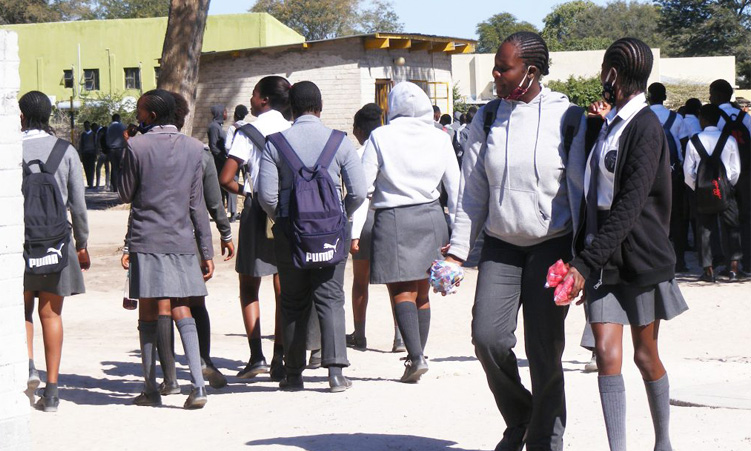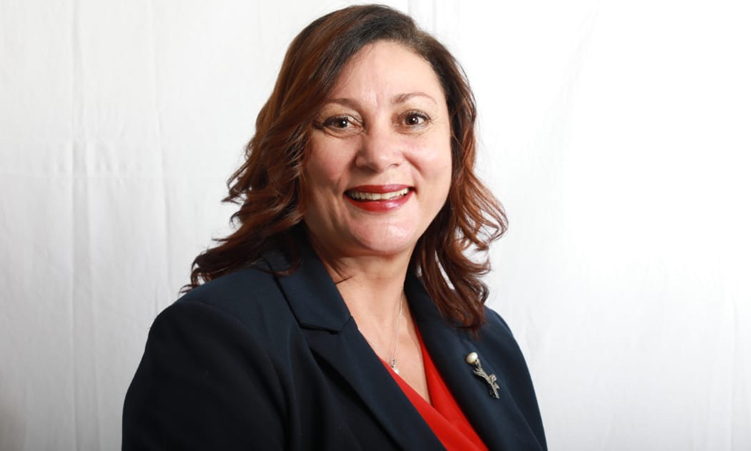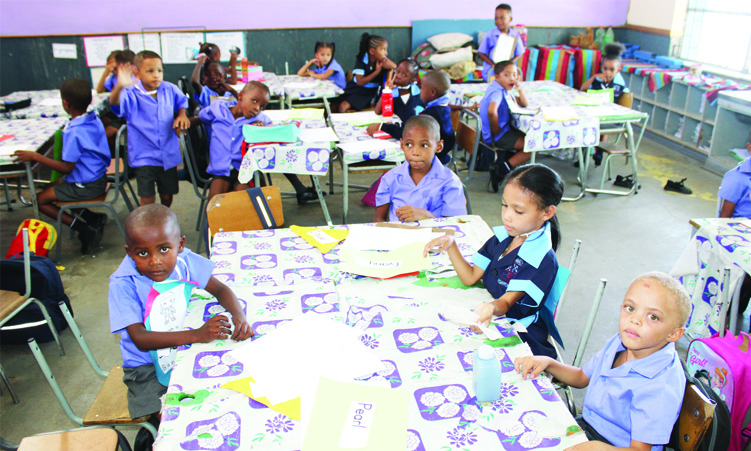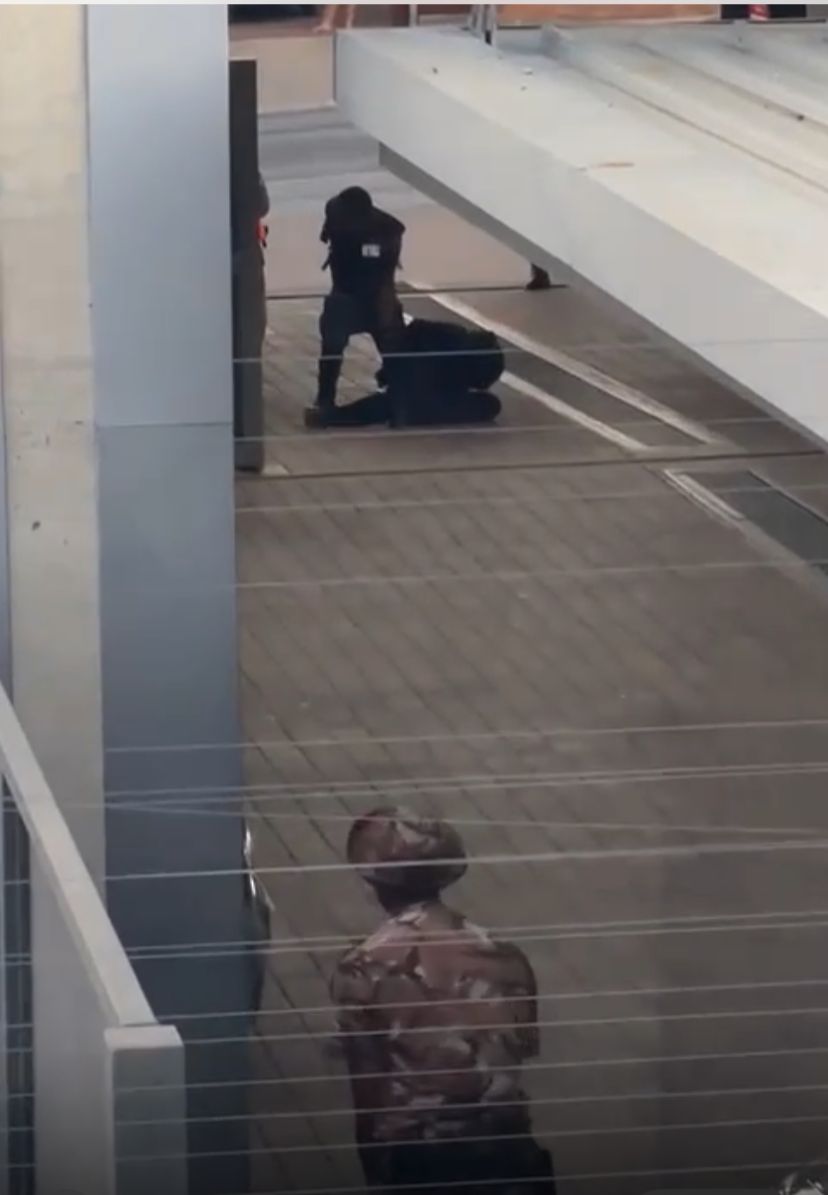As the 2025 academic year kicked off yesterday, schools countrywide faced mounting challenges including overcrowded classrooms, pupil placement shortages, accommodation issues and a lack of essential resources.
The Erongo and Zambezi regions are the hardest hit.
Caprivi Senior Secondary School (CSSS) principal Richard Musilizo yesterday said the school hostel, which accommodates about 456 children, is facing a critical mattress shortage, forcing pupils to sleep on uncomfortable, worn-out mattresses.
“Pupils are putting very old mattresses together to get a bit of comfort. Last year, we got a donation of 21 mattresses through the Katima Mulilo constituency office and we also procured about 60 mattresses as a school. Currently, we only have those mattresses.
The others are in a dilapidated state.”
He said the school also doesn’t have any functional lockers for pupils to safeguard their property.
Regional education director Alex Sikume, who briefed the media on the mattress issue at the school, noted that the region procured over 820 mattresses last year.
He added that CSSS will be the beneficiary of 200 of these mattresses.
“The mattresses that we procured from Ondangwa were supposed to be in the region in December.
However, due to transport challenges, we were only able to bring a few. We are in the process of getting a bigger truck to get the remaining mattresses. We are also in the process of procuring lockers for the hostels,” Sikume said.
Musilizo noted that they received 590 applications for Grade 8, but due to space shortages, they are only able to accommodate 208 pupils.

He emphasised that they are looking at ways to accommodate the remaining pupils because they do not wish to send anyone away.
“The regional director gave a suggestion for us to increase the number of pupils from 35 to 40, as well as add an additional class to accommodate more pupils.”
Musilizo noted that pupil enrolments have risen from 708 to 1 090, which has resulted in the school having a shortage of chairs and tables.
“We are sitting with a shortage of over 400 chairs. Hopefully, the regional office will assist us in that regard.”
Ngweze Senior Secondary School principal Gibson Nkando said a shortage of classrooms sees the school struggling to accommodate 1 215 enrolled pupils.
Despite the classroom shortage, parents continue to flock to the school looking for space for pupils in grades 8 and 10.
“A huge number of parents are coming to look for placements for their children. We are busy enrolling those pupils that applied in 2024 and taking a physical count to see if everyone we admitted shows up. If some of them don’t show up, we will place these pupils that are coming in now.”
Nkando said the school is further facing a shortage of 12 teachers for the subjects physical science, chemistry, Silozi and English.
“The posts were advertised and interviews were done. However, till now the teachers are not appointed. We are supposed to start with teaching and learning, but how do we do that without teachers?”
Meanwhile, over 50 000 pupils were expected to return to school in the Erongo region yesterday amid wide-ranging infrastructure challenges and resource shortages.
Erongo director of education Erenfriede Stephanus in a speech in September last year emphasised that the region’s education system is strained by a lack of resources in the face of a rapidly expanding pupil population.
The number of pupils in the region surged by 5%, from 53 538 in 2023 to 56 313 in 2024.
Meanwhile, a significant portion of facilities are outdated or in a state of disrepair.
Regional educators face challenges, including classroom shortages, staff shortages driven by budget constraints and recruitment delays, as well as high turnover rates in key positions, largely due to stress.

WE ARE WORKING ON IT
Education executive director Sanet Steenkamp has defended the ministry’s efforts to address the annual pupil placement challenge in schools, particularly in areas like Ongwediva and Oshakati, where urbanisation has led to increased demand for space.
Steenkamp acknowledged that 641 Grade 1 pupils and 1 200 pre-grade pupils remain unplaced in the Oshana region.
However, she outlined several interim measures to address the situation, including the deployment of additional teachers and the implementation of the platoon system.
“In the platoon system, one group of teachers and pupils uses the school facilities in the morning, while another group uses them in the afternoon. This mechanism helps to accommodate more pupils within existing infrastructure.”
Steenkamp emphasised that significant progress has been made, highlighting the construction of 1 022 classrooms over the past two financial years, with ongoing projects set to be completed by March.
Despite these efforts, some schools in the Omaheke, Oshana and Ohangwena region will need to rely on the platoon system until all facilities, including ablution blocks, are finalised, she noted.
Steenkamp dismissed claims that the issue is systemic, attributing some challenges to parents failing to secure school placements early, as well as urbanisation.
“This is not a recurring issue; it is a situational challenge driven by urbanisation and annual increases in the pupil population, which has grown at a rate of 3.5% annually,” she said.
She pointed to progress in other regions, noting that in the Khomas region, only 282 Grade 1 pupils and 178 pre-grade pupils remain unplaced. This is a significant improvement compared to previous years, she added.
The ministry has also rolled out contingency plans to address specific challenges, such as placing 1 700 unplaced Grade 8 pupils in the Khomas region, as well as resolving placement delays at Okahandja.
In addition to classroom construction, the ministry has filled 614 teaching posts, 120 head of department positions and other critical support roles, including matrons and cleaners.
She said new schools have also been opened at Rehoboth, Otavi, Swakopmund and Henties Bay, with six more under construction and awaiting adjudication by the Central Procurement Board.

CLASS TIME… MH Greef pupils sitting in class.
OVERCROWDING
However, a teacher at People’s Primary School, who opted to remain anonymous due to fear of victimisation, yesterday said pupils are forced to share chairs due to overcrowding.
“As I am speaking, in Grade 1, there are 49, 47 and 50 pupils. In pre primary, there are only supposed to be about 30 pupils in a class but there are 42.”
The teacher also said pupils are being taught in tents due to overcrowding, which requires more teachers to be hired.
“Last year, we already had to fix chairs and now due to the increase of pupils this year, the ministry told us to find our own solution.”
MH Greef principal George Kandetu said overcrowding issues are a result of smaller classrooms built many years ago to accommodate the population at the time.
“When these schools were built, Windhoek had a small population of 200 000 people, not today’s population.”
Kandetu said a committee has been established to find solutions to address the issue of pupil placements at the school.
“As we are speaking, there is a committee in session to evaluate the situation, if the pressure rises, we can admit up to 44 pupils in a class, however, that is not an ideal situation and it’s only when we are forced.”
Stay informed with The Namibian – your source for credible journalism. Get in-depth reporting and opinions for
only N$85 a month. Invest in journalism, invest in democracy –
Subscribe Now!









